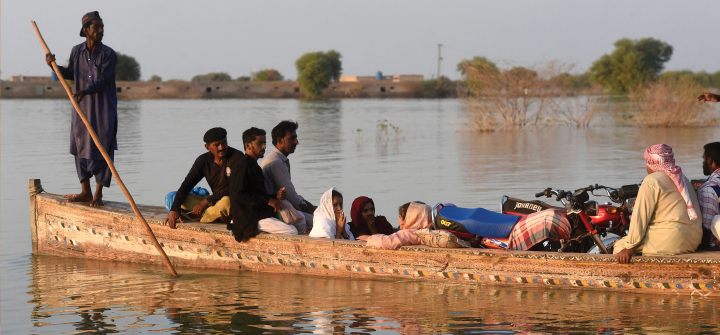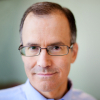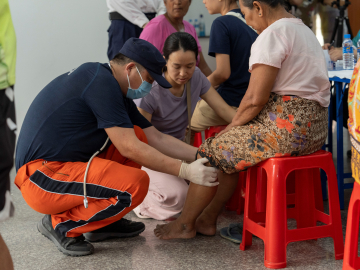Lessons from Pakistan’s Floods
As historic flooding put a third of Pakistan under water and displaced 33 million people, Aga Khan University in Karachi mobilized its resources to help. Led by Adil Haider, dean of AKU’s Medical College, the response relied on its field research sites, quick disaster training, and intense collaboration.
The result: AKU provided medical care to 400,000+ people in less than 2 months.
In a recent interview with GHN after a presentation to the J.B. Grant Society at the Johns Hopkins Bloomberg School of Public Health, Haider, MBBS, MPH, shared his thoughts on the health issues caused by the flooding, lessons learned from leading AKU’s response, and how to prepare for future disasters as climate change’s impact intensifies.
Your university treated 400,000 people in less than 2 months. How did you do that?
We’re so grateful that we have very well-functioning field sites to do research in those areas. One of the [principal investigators said], “In our daily work, we just collect data. But now with the floods in the response to this calamity, we had to actually be doctors again.”
So what we did is, first we leveraged the field sites. We trained 4,000 health care providers online over a few weeks. Many volunteered, many were rotated. We made them all do an hour-long course so that they knew what to expect and what to handle. And so each camp would see 300–400 people in a day, and it would cost around $3–$4 per person. That includes medications. But that doesn’t include setting up the camp and so on and so forth. We did about 1,200–1,300 camp days across 30 to 60 different locations. We’d run them for 2 weeks or 3 weeks each. And if you do the math, with a few hundred at each camp, we ended up with 400,000.
What were the biggest health concerns you saw?
Of course, there were lots of blood-borne diseases, infectious diseases. We had a lot of malaria and dengue. Many of the diseases we saw were from people being close together, so upper respiratory tract infections and so on. The whole gamut is what we saw.
People there didn’t have good health care to begin with. I saw so many patients with reflux disease, for example. It was exacerbated because a lot of the aid organizations were giving very nicely made food with rice and meat and so on. And these folks are like, “Well, we eat meat once a month. And so you give us all this like heavy, rich food, and we can’t handle it.”
Did other well-meaning external groups come in to help and actually cause problems?
I don’t think they caused more problems. We spoke to this group that was providing food. Look, food with a lot of meat is more expensive, right? But they thought that that’s a nice thing to do. But when we explained the issue, they changed it and then things got much better.
So I think it’s clear communication, again. And I think an American ethos of creating a win-win works great in disaster situations because they’re trying to do a good job, we’re trying to do a good job, and you look at the best in people, and give them a benefit of doubt.
What were your biggest lessons learned from this experience?
The biggest learning was, stick with the things you’re good at. So that’s why we focused on health care and education because that’s our strong spot. And let other people do the things that they’re excellent at. We didn’t try, for example, to deliver food and so on.
The other big lesson is how we just need to be prepared for this kind of stuff. We used the same command structure that we used in COVID. We basically recreated that for the floods.
And then an additional big learning is that collaboration is really the key and communicating what you’re doing. Because we were communicating how we were working, we were able to get wonderful support from very important partners, primarily the Bill & Melinda Gates Foundation, Gavi, the Swiss government, CIDA Canada, and lots of other partner organizations. And very importantly, we fundraised from our own internal group, our alumni and so on who supported that.
You’ve also talked about climate change. What preparations need to be in place before the next disaster?
I think we need to work with climate scientists. We’ve got to figure out how these patterns are going to emerge. And then we need to create an early warning system so as the floods are coming or whatever, we can get people out of harm’s way.
Are there things like countries like the US could learn from your response?
We really benefited from having groups that were being well coordinated partly by the government and a UN agency. The other thing was, how do you do things at scale and at lower cost? So, we created templates for how we’re going to treat people. Not everything got a blood test and so on. If the person fit the bill for malaria, and we didn’t have the test, we would treat. We were figuring out the pathway for efficient, fast health care, which was the need of the hour.
This interview has been edited for length and clarity.
Join the 50,000+ subscribers in 170+ countries who rely on Global Health NOW summaries and exclusive articles for the latest public health news. Sign up for our free weekday newsletter, and please share the link with friends and colleagues.
Internally displaced people use a boat to cross a flooded area at Dadu in Sindh province, Pakistan. October 27, 2022. Asif Hassan/AFP via Getty Images





